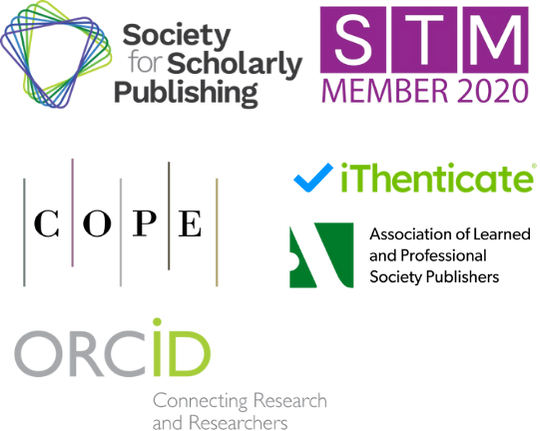Research on the Application Potential of Biomass Particles Extracted from Moldy Orange Peels as a Novel Adsorption Material
DOI:
https://doi.org/10.71222/b8xhw606Keywords:
biomass particles, moldy orange peels, adsorption, methylene blue, sustainable materialAbstract
The escalating environmental pollution caused by industrialization necessitates the development of cost-effective and environmentally friendly adsorbent materials. This study explores the potential of biomass particles extracted from moldy orange peels, an abundant agricultural waste, as a novel adsorbent for environmental remediation. Morphological characterization by scanning electron microscopy (SEM) revealed the particles to be micro-sized, predominantly spherical to elliptical, with highly porous and rough surfaces. Energy-dispersive X-ray spectroscopy (EDX) confirmed their organic nature, primarily composed of carbon and oxygen, with detectable amounts of nitrogen and phosphorus, indicative of their biological origin. Fourier transform infrared spectroscopy (FTIR) further identified various functional groups (hydroxyl, carboxyl, amino groups) crucial for pollutant interaction. Adsorption experiments, simulated using methylene blue as a model pollutant, demonstrated remarkable adsorption capacity, reaching up to 185 mg/g, aligning well with the Langmuir isotherm model. Kinetic studies showed that the adsorption process followed a pseudo-second-order model, suggesting a chemisorption mechanism. Furthermore, preliminary regeneration studies indicated the reusability of these particles for multiple cycles with acceptable efficiency. The findings highlight that these readily available and sustainable biomass particles possess promising attributes as an effective and low-cost adsorbent, offering a valuable solution for wastewater treatment and resource valorization of agricultural waste.
References
1. S. Hao, S. et al., "Preparation and adsorption properties of green sustainable biomass carbon microspheres," Ind. Eng. Chem. Res., vol. 61, no. 30, pp. 11249-11261, 2022, doi: 10.1021/acs.iecr.2c00094.
2. A. B. S. Aguiar, S. et al., "Removal of metals by biomass derived adsorbent in its granular and powdered forms: adsorption capacity and kinetics analysis," Sustain. Chem., vol. 3, no. 4, pp. 535-550, 2022, doi: 10.3390/suschem3040033.
3. U. Michael-Igolima, S. et al., "Modified orange peel waste as a sustainable material for adsorption of contaminants," Materials, vol. 16, no. 3, p. 1092, 2023, doi: 10.3390/ma16031092.
4. Z. Jiang, S. et al., "Application of biodegradable cellulose-based biomass materials in wastewater treatment," Environ. Pollut., vol. 290, p. 118087, 2021, doi: 10.1016/j.envpol.2021.118087.
5. B. Wang, S. et al., "Adsorption of heavy metal onto biomass-derived activated carbon," RSC Adv., vol. 13, no. 7, pp. 4275-4302, 2023, doi: 10.1039/D2RA07911A.
6. J. Zhao, S. et al., "Enhancement of selective adsorption of Cr species via modification of pine biomass," Sci. Total Environ., vol. 756, p. 143816, 2021, doi: 10.1016/j.scitotenv.2020.143816.
7. Z. Cai, S. et al., "Waste-to-resource strategy to fabricate functionalized MOFs composite material based on durian shell biomass carbon fiber and Fe3O4 for highly efficient and recyclable dye adsorption," Int. J. Mol. Sci., vol. 23, no. 11, p. 5900, 2022, doi: 10.3390/ijms23115900.
8. O.-A. O. Abiodun, S. et al., "Remediation of heavy metals using biomass-based adsorbents: adsorption kinetics and isotherm models," Clean Technol., vol. 5, no. 3, pp. 934-960, 2023, doi: 10.3390/cleantechnol5030047.
9. J. Ma, S. et al., "Biomass derived porous carbon for efficient iodine adsorption from vapor and solution," Sep. Purif. Technol., vol. 347, p. 127613, 2024, doi: 10.1016/j.seppur.2024.127613.
10. H. Li, S. et al., "Mechanisms and adsorption capacities of ball milled biomass fly ash/biochar composites for the adsorption of methylene blue dye from aqueous solution," J. Water Process Eng., vol. 53, p. 103713, 2023, doi: 10.1016/j.jwpe.2023.103713.
11. S. Zhang, S. et al., "Preparation of a composite material based on self-assembly of biomass carbon dots and sodium alginate hydrogel and its green, efficient and visual adsorption performance for Pb2+," J. Environ. Chem. Eng., vol. 10, no. 1, p. 106921, 2022, doi: 10.1016/j.jece.2021.106921.
12. B. Yardımcı, N. Kanmaz, "An effective-green strategy of methylene blue adsorption: sustainable and low-cost waste cinnamon bark biomass enhanced via MnO2," J. Environ. Chem. Eng., vol. 11, no. 3, p. 110254, 2023, doi: 10.1016/j.jece.2023.110254.
Downloads
Published
Issue
Section
License
Copyright (c) 2025 Olg Smirnova, Anna Petrova (Author)

This work is licensed under a Creative Commons Attribution 4.0 International License.


